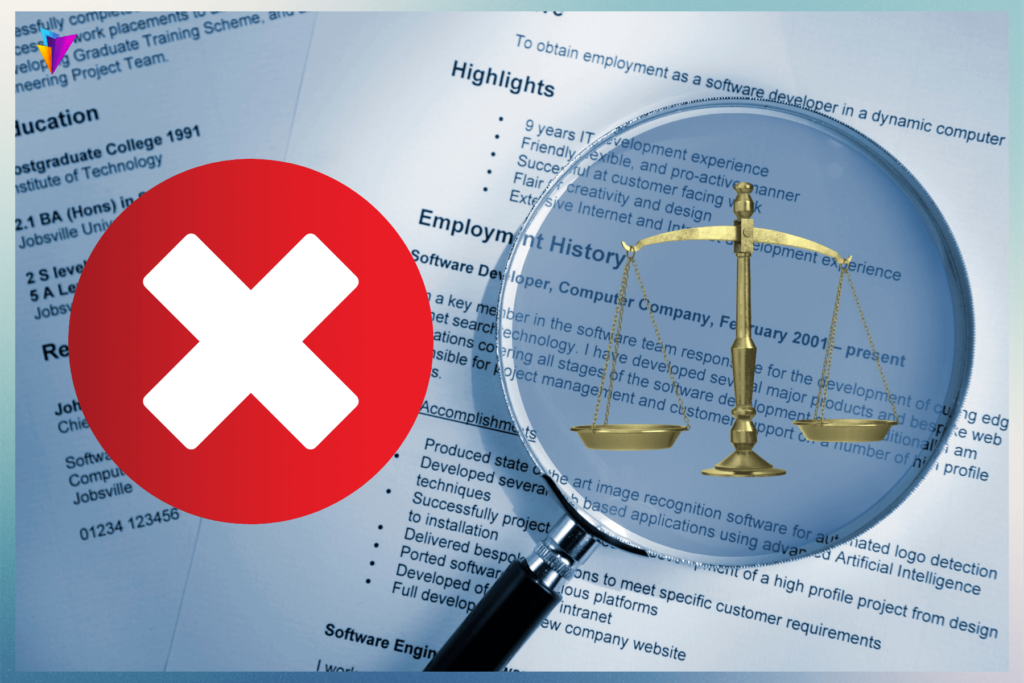Despite progress toward workplace equality, gender bias continues to influence hiring decisions, often in subtle and unconscious ways. From resume screening to final interviews, biases based on gender can impact the perception of candidates, leading to problems in employment opportunities. Addressing these biases is essential if you want to foster a fair hiring procedure.
So, this article examines how gender bias appears in resumes, the role of gender stereotypes in hiring, the impact of gendered language, and practical strategies for gender-neutral resume evaluations.
How Gender Stereotypes Influence Hiring Decisions
Gender stereotypes affect hiring in ways that many recruiters may not consciously recognize. These preconceived notions shape how recruiters judge candidates based on their gender, rather than their skills and experience.
Three particularly common gender stereotypes in hiring include:
1. Leadership and Assertiveness
- Firstly, employers see men as decisive, authoritative, and natural leaders—qualities associated with leadership roles.
- Recruiters perceive women as less assertive or authoritative, which makes harder for them to be considered for managerial or executive positions.
- Lastly, hiring decisions influenced by these biases can result in fewer female candidates advancing into leadership roles, despite having the necessary qualifications.
2. Technical vs. Soft Skills
- Employers frequently associate men with technical proficiency, particularly in STEM (which stands for Science, Technology, Engineering, and Mathematics) fields. This perception can lead to male candidates being favored for roles in IT, engineering, and finance.
- Secondly, employers often stereotype women as excelling in soft skills such as communication, collaboration, and empathy. While these skills are valuable, they may be undervalued in industries where technical skills are prioritized.
3. Career Commitment and Family Responsibilities
- Sometimes, recruiters perceive women as less committed to their careers due to potential family responsibilities, maternity leave, or work-life balance concerns.
- Men are rarely subjected to the same scrutiny regarding their long-term dedication to their careers.
Thus, such biases can result in fewer hiring opportunities for women in demanding or high-responsibility roles.
The Hidden Impact of Gendered Language in Resumes
Gendered language subtly reinforces stereotypes and influences hiring decisions. Even when unintended, certain words and phrases create biased perceptions about a candidate’s suitability for a role.
So, here are three ways gender language affects resume evaluations:
1. Gendered Adjectives
- Some employers link male-associated terms like “aggressive,” “competitive,” and “dominant” are often linked to leadership and executive roles. Furthermore, these words may make male candidates seem more suitable for these positions.
- Female-associated terms like “supportive,” “nurturing,” and “collaborative” may reinforce stereotypes that women are better suited for administrative or care-based roles, rather than leadership.
2. Pronouns and Titles
- The inclusion of “Mr.” or “Ms.” on resumes can reveal gender, leading to unconscious bias.
- Using gender-neutral titles, such as “Manager” instead of “Chairman” or “Chairwoman”, can help reduce gender bias in hiring.
- “They/them” pronouns or avoiding pronouns altogether can contribute to a more gender-neutral hiring process.
3. Experience Descriptions
- Women’s resumes may highlight supporting roles and team contributions, while men’s resumes often emphasize leadership and accomplishments.
- Hiring managers may unconsciously devalue resumes that emphasize traditionally “feminine” traits like cooperation and teamwork, even though these are essential workplace skills.
4 Techniques for Promoting Gender-Neutral Resume Reviews to Tackle Gender Bias
Eliminating gender bias requires organizations to implement structured hiring processes that focus on qualifications rather than gender-based assumptions. Below are four key strategies to promote gender-neutral hiring.
1. Blind Recruitment Practices
Removing Identifiers: Blind recruitment involves eliminating names, pronouns, and gender-identifying information from resumes. This prevents hiring managers from forming initial impressions based on gender.
Focusing on Skills and Experience: Recruiters must evaluate candidates on qualifications and achievements and ensure that they have taken hiring decisions based on their merits.
2. Standardized Evaluation Criteria
Uniform Metrics: Establishing objective scoring rubrics helps hiring teams evaluate candidates based on the same predefined criteria, reducing the influence of gender bias.
Structured Interviews: Conducting structured interviews with consistent questions and scoring methods helps create a fairer hiring process.
3. Gender Bias Training and Awareness
Bias Training: Providing training for hiring managers on recognizing and eliminating gender bias fosters a more inclusive recruitment process.
Awareness Campaigns: Internal campaigns that promote diversity, equity, and inclusion (DEI) encourage employees to challenge biases and support gender-balanced hiring practices.
4. Gender-Neutral Language in Job Descriptions
Crafting Inclusive Job Listings: Using gender-neutral job descriptions helps attract a wider range of applicants. Research shows that gendered language in job postings can discourage certain candidates from applying.
Avoiding Gendered Terms: Phrases like “nurturing leader” or “aggressive go-getter” can reinforce stereotypes. Instead, job descriptions should focus on skills, competencies, and responsibilities.
Conclusion: Eliminating Gender Bias for Fair Hiring Practices
Addressing gender bias in hiring is crucial for fostering equal opportunities and ensuring that recruiters or employers judge candidates based on merit, not gender stereotypes. By understanding how gender bias manifests in resumes, recognizing the impact of gendered language, and implementing bias-free hiring strategies, organizations can create a fair hiring process.
Employers that adopt blind recruitment, standardized evaluation criteria, gender bias training, and inclusive language will not only reduce hiring gaps but also cultivate a more diverse, innovative, and high-performing workforce. The key to progress lies in breaking stereotypes, promoting fairness, and fostering a culture of gender equality in the workplace.










